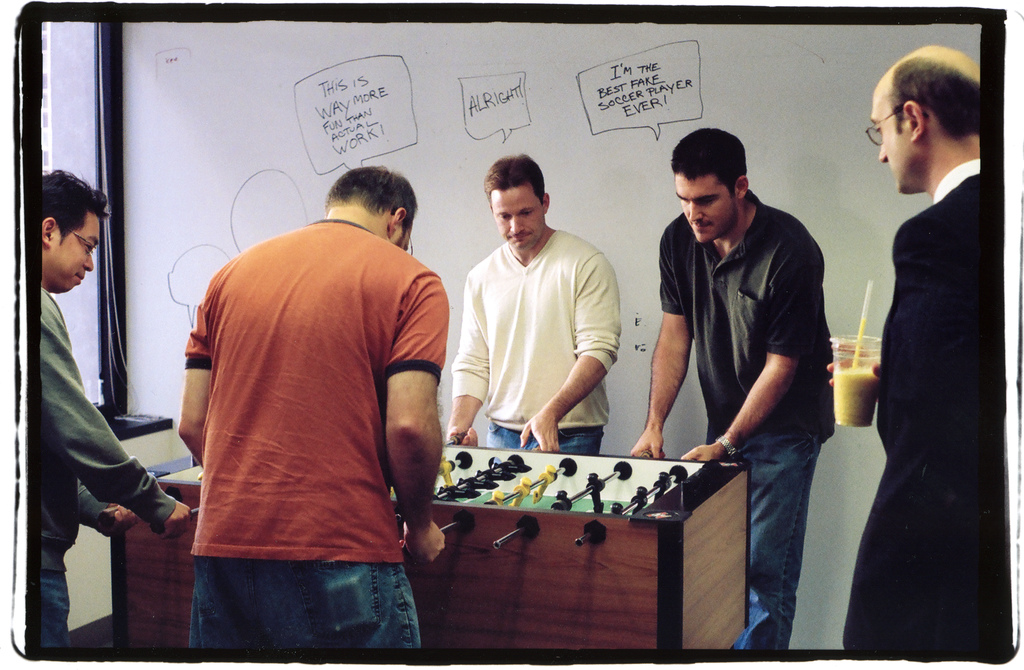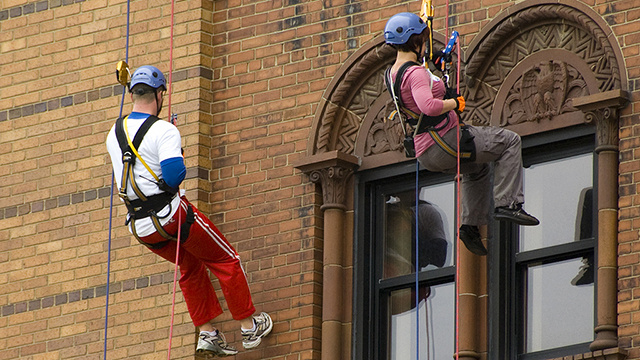Should You have a Close Friend at Work?

Photo credit: Al Abut
As we talk about innovative leadership, many people are likely wondering what this really means in concrete examples, not some theory.
One concrete example is the shift from the view that good leaders and managers ensure their employees are doing their work and not spending time on activities that take away from their focus on tasks.
Early in my career, my boss asked that I make sure my team members do not spend too much time talking. When they talked for more than about two minutes, I was to go over and ask them if there was anything I could help them with. If not, they were to get back to work. Now we have interesting research that suggests that this focus on productivity at the expense of camaraderie at work is counterproductive. I understand there is a balance in all things and this this case is no exception.
So, what changed? As we moved from the industrial era model for many jobs to a knowledge based economy, we are now more worried about “employee engagement”. The world’s top-performing organizations understand that employee engagement is a force that drives performance outcomes. In the best organizations, engagement is more than a human resources initiative — it is a strategic foundation for the way they do business.
Research by Gallup and others shows that engaged employees are more productive. They are more profitable, more customer-focused, safer, and more likely to withstand temptations to leave. The best-performing companies know that an employee engagement improvement strategy linked to the achievement of corporate goals will help them win in the marketplace.
One of the questions in the Gallup engagement survey asks if employees have a best friend at work. According to Gallup, “Those without a best friend in the workplace have just a 1 in 12 chance of being engaged. Social relationships at work have also been shown to boost employee retention, safety, work quality and customer engagement.” So think about this – if I take time to have conversations with people at work enough to consider someone a good friend, I must be breaking the 2 minute rule.
Beyond the time, I was also taught that my personal life is private and not to be shared with colleagues. I remember a boss who shared her struggles with this notion. She was very private and she seemed distant and a bit uncaring. My favorite boss was much “warmer” and more open. She was professional and appropriate and could have a very direct approach and yet no matter how frustrated she became with the work, I always knew I could count on her to be fair. My trust in her ran deep because I had a “friendship”.
So, this is one example of how the rules have changed in many workplaces. If employee engagement is a differentiator, then we need to move beyond the old rules to a new and more innovative view of leadership. This is one small example of how innovative leaders look at work and people in the workplace very differently. They are not “human resources”, rather they are real people who have hopes and dreams and friends.
Do you have a colleague or friend at work that you trust to give you honest feedback? Someone to help think through a challenging work situation? Do you feel like someone cares about your career success? What are you doing to be a “friend” at work to your colleagues?
This article was originally posted on Metcalf Associates







